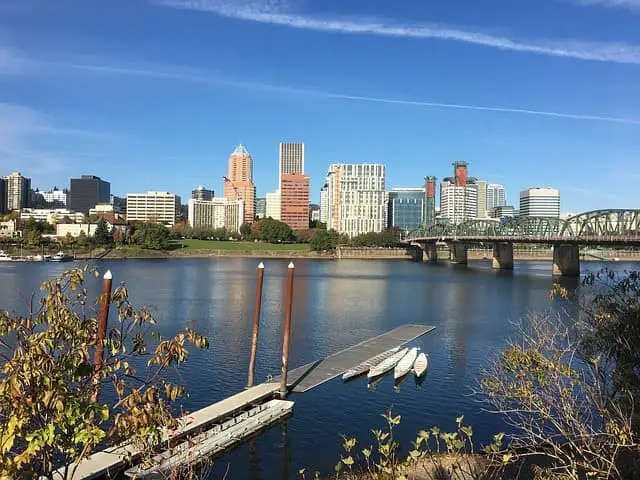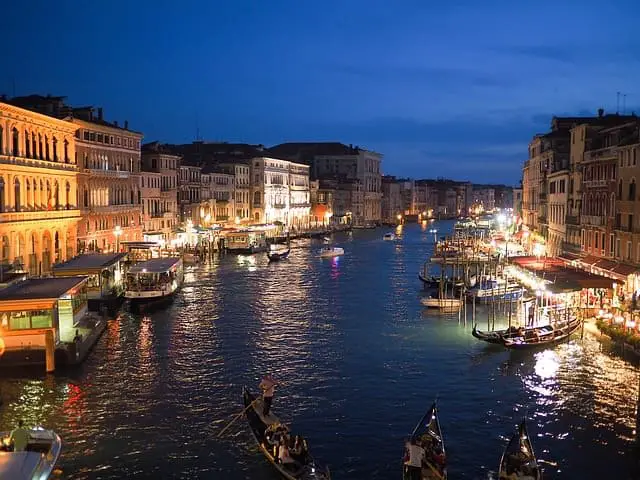Do you know what makes Venice, Sydney, Montreal, and Rotterdam similar? Each of these cities is essentially a huge waterfront, there development is known as waterfront development. As a matter of fact, some of the biggest cities and most popular tourist destinations reside on beautiful and highly functional waterfronts.
The whole concept is extremely important given the fact that human civilization has always been dependent on rivers, seas, and oceans. For instance, nearly half of the population of the United States – 153 million people in particular – lives along the nation’s 95,331 miles of ocean and Great Lakes coast.

Definition of waterfront development
By definition, it is a part of a town that is next to an area of water such as a river or the sea. Although it sounds simple, waterfronts are actually complex and demand a fair share of planning and strategic thinking. In this post, we will explain to you the basics of waterfront development.
Waterfronts are a great place to relax and unwind after a long day. They provide cities with a good public space to explore the space and most waterfront cities also connect other centers of the city by their prime location. From Chicago to Auckland, most western cities have a waterfront area especially if they are located on the coastal side of the globe. It is difficult to find a waterfront space that appeals to everyone or is liked by everyone, but most of them fulfill the purpose of providing good elements for a public space. The fact that they are along the water is very pleasing for some people and instead of going to a beach, they can enjoy the more developed place along the waterfront. Waterfronts are also usually surrounded with cafes, seats, markets, walkways and other promising elements that give people good amenities to explore the city’s surroundings.
Why go for Waterfront Development ?
The first precondition for building a waterfront is obvious – you need to reside in a coastal zone. Everything other than that is subject to analysis and multiple interpretations because the waterfront development is extremely challenging.
Jake Gardner, an engineer and a blogger, says there can be no general principle on how to construct a waterfront because almost every place differs by a variety of social and environmental factors: “You have to take into account the impact of climate, local communities, local landscape, and many other details to design a compact waterfront.”
However, we can name a few factors that strongly contribute to the development and/or revitalization of waterfronts all over the world:
- Available land: It is almost impossible to build a waterfront in coastal areas with no flat land to support the construction.
- Environmental regulations: Waterfronts have to be neat and clean, which is perfect for environmentalists who promote eco-friendly development.
- Historic preservation: There are also lots of local groups that demand the historic preservation of the landscape, so the only solution is to rebuild waterfronts and make them resemble the original.
- Urban revitalization: Of course, one of the main reasons to (re)build waterfronts is to revitalize urban areas and make cities more comfortable.
A typical waterfront is a complex system that encompasses many different elements, including marinas, boats, promenades, docks, transportation networks, commercial, and private real estate. In such circumstances, it’s not surprising to learn that all sorts of stakeholders contribute to and influence the decision to build a new waterfront.
The main players include the authorities (national, local, and development agencies), the general public (experts and local residents), private stakeholders (land owners, investors, etc.) and professional staff such as architects, construction engineers, and marina operators.
Also Read: Riverfront Development | Background, Use & Example
4 Waterfront Use-Cases
Waterfronts are highly versatile in nature, which means they can fulfil many different purposes. Local authorities sometimes choose to build it for one particular reason, while some other times they want to give waterfronts multiple functions simultaneously.
The latter is where they need to be extra cautious because different features may be too contrasting to function properly one next to another. This issue is also a subject to strategic thinking, but we don’t want to bother with it too much, so let’s discuss the four most common use-cases of a waterfront.
- Commercial: A waterfront can be a popular place for businesses of all types and sizes. This is why you will often see a waterfront built for commercial purposes.
- Industrial: Another solution is to design a waterfront that helps various industries to ship their products simply and effortlessly all over the globe.
- Residential: Of course, people build waterfronts for residential use as well. Just imagine how cool it would be to have a place in the St Tropez or Cannes waterfront?
- Recreational: The fourth function goes hand in hand with the previous one. Namely, waterfront residents need a place to recreate and a local promenade seems like an ideal solution in most cases.
Building a multifunctional waterfront sounds like a dream come true, but it’s not so easy to combine the four features and design an all-encompassing system. In order to achieve this feat, there has to be flawless cooperation between urban designers, politicians, and investors. Besides that, some other preconditions have to be taken care of:
- A mutual understanding between local residents and investors who have commercial plans.
- Professional planners and construction agencies with expertise to design such a demanding project.
- No ownership issues or barriers.
- A feasible financial plan that can function in the long run.
- Full transparency among stakeholders.
- A plan to rearrange and preserve the existing urban concept along with the corresponding infrastructure.
The Results of Developing a Sustainable Waterfront
If you already have everything worked out and prepared for the execution, then you should know the usual steps that lead to the waterfront development. It’s a multistage process that looks like this: Idea → Analysis → Concept & Planning → Design & Engineering → Permits & Approval → Realization → Evaluation.
Now, what do you get from it in the end? The list of results is impressive:
- A place to live, work, and enjoy leisure time activities
- A contribution to urban development
- A big economy booster in the neighborhood
- A natural and ecological restoration
- A revitalization of long-forgotten features
- Flood prevention
- Building a brand new identity of the city
- New means and routes of transport
- Riverbed restoration
With all the benefits we stated above, it is clear why so many cities worldwide decide to take advantage of their water areas and build or reconstruct their waterfronts.
Here are five good examples of waterfronts around the world:
1) Auckland, New Zealand – Known as the city of sails and the landmark for the next America’s Cup, Auckland has worked hard in developing its waterfront area for many decades. Nearly every resident owns a boat in Auckland so that they can use the waterfront area and can make use of the sea. The Wynyard Quarter is a fairly new public space development called the Viaduct, which offers many facilities for families and visitors. Whether you are a solo traveller or traveling with others, the Viaduct has something to offer for everyone. The boats also connect to close by Islands such as the Wahiki Island which is very accessible and affordable for Aucklanders to stay in.
2) Venice, Italy – As a seascape city surrounded with water, Venice is one of the best examples of a waterfront city as the whole city is built on waterways and the seascape. The walkways are also surrounded by seas which make it very appealing for people who love the water. There are footpaths and roadways which are also built on water. The boats are also regular around the harbor where you can travel to close by places and explore the city through the sea. The waterfronts in Venice offer the perfect example for cities worldwide to utilize their coastal setting.

3) Sydney, Australia – The Sydney Harbour is one of the most famous waterfronts areas and has many people visiting on a regular basis. Surrounded by the Opera House, Circular Quay, and the Botanic Gardens gives it a unique waterfront experience. You can also view the Sydney bridge from the harbourside. There are many cafes, shops, seating, and a large pavement to walk alongside the waterfront where you can find many global visitors on a daily basis. Sydney also has the reputation of one of the best cities in Australia, providing many facilities for locals. It is also one of the most multi-cultural cities in the world. The waterfront experience is one of the most sought-after experiences in the city with residents using the space for their daily walking or jogging activities.
4) Chicago, USA – Chicago has a great waterfront with many options for different kinds of experiences. As with most good waterfronts, it has a boat ride that takes you around the city to view the city’s amazing skyline with sky-high buildings. There is also an option to kayak along the waterfront if you do not want to go on a guided boat tour. Chicago Lakefront Trail is one trail that is popular with cyclists and walkers who use the space often for exercise and to get some fresh air. There are many good restaurants and cafes along the waterfront where people generally get food after doing one of the boat and city tours. It is well maintained, clean and has a good view which fits the description of being a good and world famous waterfront area.
5) Montreal, Canada – Montreal’s waterfront is worthy of mention as it provides good amenities for people to explore the city around the waterfront. There is a double-decker bus which takes you along the waterfront and many different types of waterfront cruises. If biking is your thing, then there are bike hires where you can explore the waterfront area on your own and get some exercise. Obviously, summer months seems like the best time to explore the waterfront area because in winter months Canada gets very cold (minus zero degrees) and some amenities might not be available.
Related: Tips for Promoting Healthy Cities, How Urban Economics drive Economic Development
Conclusion
The entire human civilization is closely related to water areas such as the seas, rivers, and oceans because it enables simpler transportation of people and goods. This is exactly what makes waterfronts one of the key concepts of urban development.
The above-mentioned waterfronts are a few popular destinations for seaside other than beaches that some cities offer. It is a great resource for a city to have a waterfront area and many businesses make a lot of money because of the waterfront feature. There is something that attracts people to nature and water in particular that contributes to making these destinations desirable for people to live in or migrate to. So, whatever your style, one of the above cities will have something on offer for you along their waterfronts!